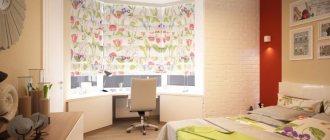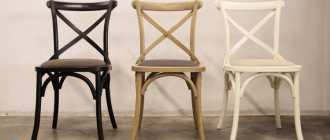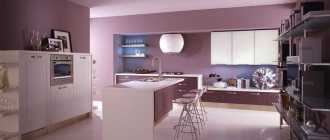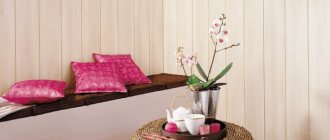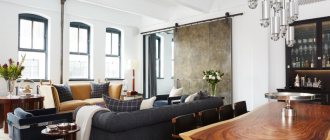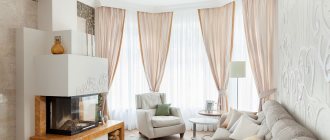The arch design is usually designed and implemented independently. Nowadays, apartment owners are trying to decorate their homes in a stylish and unique way. For these purposes, the most extraordinary design solutions are used and unusual materials are used. A decorative arch allows you not only to emphasize the subtle taste of the apartment owners, but also to give it a touch of light, refined luxury. Their story began in the Ancient East. Arches in those days were exclusively architectural objects that were installed only on the streets. With their help, cities acquired a more “noble” and neat appearance. In the interior, these objects first appeared in the mosques of the East more than three thousand years ago. At first they were used only to decorate majestic sacred places. The practice was then adopted by the ancient Romans. This point can be easily seen in the ruins of their architecture. Just wander around the dilapidated amphitheaters or admire the remains of the most famous of them, the Colosseum. Then the arches moved into the luxurious palaces of the rulers of the Western powers. At the end of the last century, this design element was not particularly favored, giving preference to experimental, defiant styles, where the classics were closed. But over the past two decades, fashion (and this lady, as you know, goes in circles) has returned to arches. And now they are already showing off in trendy minimalism, high-tech and industrial style. Let us examine in more detail the nuances of installing arches, options for their finishing and decoration.
Advantages and disadvantages
Arches in the interior have a number of undeniable advantages:
- They create a conditional dividing line. This element is ideal for zoning space in combined rooms.
- Arched complexes can decorate doorways. They will erase obvious boundaries and add a feeling of freedom and spaciousness to an apartment or house.
- The variety of shapes and design options for arches allows you to organically fit them into any style of the room. Do not be mistaken that this interior design is the domain of classical trends.
- Arched partitions are not only practical to use, but also free of installation difficulties. For this reason, the structure can be planned and assembled with your own hands without outside help. The only exceptions can be raised, multi-level structures with a large number of niches.
- This decorative element visually stretches the room, which will correct the situation with low ceilings.
- An arch is a universal decor that will fit into the design of any “passage” room: hallway, corridor or hall.
There are some elements and shortcomings:
- To install an arch between the rooms, you will have to completely dismantle the interior door and part of the wall adjacent to it. It is much easier to decorate the interior of the room with a partition structure.
- Owners will have to forget about the good sound insulation that doors previously provided.
- It is not recommended to install arches in secluded rooms: bedroom, nursery.
- This interior element is not suitable for the kitchen either. It will not become a significant obstacle to odors and particles of fat that the hood will miss. All this “disgrace” will go beyond the culinary room and be absorbed into the upholstery of armchairs and sofas. The arched option is excluded for kitchens adjacent to the hall.
The design of structures opens up wide scope for the designer’s imagination. As a rule, arches either merge with the walls or play the role of a stylish accent and are decorated according to a contrasting principle.
Options for using arches in the interior of different rooms
The use of this decorative detail is not limited to the living room or corridor. You can decorate the kitchen, create two zones in the bedroom, hallway, even combine the balcony with another room.
Below we will consider the design of arches and openings in the apartment.
Living room
The living room can be divided into two zones. The main thing is that the shape of the arch matches the door that closes the living room. It is not necessary to install arches everywhere in the house; if you have a large living room, then it is quite possible to make two rooms or zones out of it.
For example, one zone is intended for gatherings with family or friends, the other for privacy; you can install a bookcase and one or two soft chairs.
Kitchen
The whole family gathers in this room, so it is important to make it not only functional, but also cozy. It is more comfortable if a large kitchen is divided into two zones, separating the cooking area from the eating area.
You will get a kitchen and living room in one room.
Hallway
You can make a beautiful passage to the living room, since that is where we usually invite guests. Instead of a regular arched opening, you can create an arch from niches, and put various decorative elements there - vases, figurines, candles, etc.
Bedroom
If the room is large enough, you can make a dressing room, but instead of installing doors, create a beautiful arch. If you don’t want or don’t have the opportunity to divide the bedroom into two zones, then think about an alcove arch. This is not a doorway, but rather a built-in cabinet with small niches.
In this way, you can focus attention on the bed, and put candles in small niche shelves to create a romantic atmosphere.
Other premises
You can add charm to your bathroom by dividing it into two zones. If the room is large, then the shower room or toilet (if the bathroom is combined) can be separated from the area with the bathtub. This way you focus attention on the bathroom; it is better to place it in the middle of this area.
The children's room, like the bedroom, can also be divided. One area is for relaxation, entertainment and lessons, and the other is for sleeping and gaining strength.
If you have a house and have a covered terrace, then it can be combined with the living room.
Types and variety of arches
The main characteristic feature of the structure is its shape. The classification based on this feature is as follows:
- Roman (classical) options. The vault of the arch has a perfectly semicircular shape. It flows smoothly and harmoniously into the side walls. The Roman design visually smooths out sharp corners in the room and lengthens the ceiling. Unfortunately, it can only be constructed with a certain ratio of width and height. The Roman arch with artificial columns on the sides is considered one of the main elements of the luxurious antique style.
- British version. The arched vault is a circle with a truncated radius. British-type designs look organic in wide doorways.
- Turkish arches. They are characterized by the presence of a pointed dome on the vault. Similar forms can be seen in any object of Eastern architecture. It is best to decorate such decor with a complex, subtle pattern, more like handmade lace.
- An arch using an ellipsoidal element. Its arch has a curvature in the middle, as if someone had flattened it from above.
- The Slavic design follows the contour of the doorway, but slightly smoothes out the sharp corners. Suitable for practical style solutions.
- Gothic or pointed arch. These designs are present in the architectural movement of the same name and its offspring (St. Bavo's Cathedral, Westminster Abbey). Their arches are slightly elongated upward and have a certain point in the middle where two lines converge.
- The Thai arch is “half”: if the traditional structure is cut strictly in the middle, you will get exactly this decorative element.
- The transom arch has a blank, glazed arch, under which there is a classic doorway.
Types of interior arches
All arched openings are conditionally divided into two groups:
- Active - have a complex shape, unusual symmetry, serves as a decorative element.
- Passive arches - simple shape and design, indicate the boundaries of the room.
As for decorative arches, based on their shape, the following designs are distinguished:
- Rectangular - a simple arch in shape that takes up little space in the opening. Most often, such an arch is used for a one-room apartment, designed in a high-tech or minimalist style.
- Ellipsoidal - an interesting and beautiful arch, made in the form of an arc in the shape of an ellipse. Expensive types of wood are used to finish the opening.
- Trapezoidal arches are original in shape and are used in buildings with high ceilings. Beveled corners and original decor are best emphasized by housing decorated in the style of English classics.
- Roman - an arch made in the shape of a symmetrical regular semicircle.
- The eastern arch is a model whose decor is characterized by a sharp end located in the upper part of the dome.
- Thai or semi-arches are structures, one side of which is semicircular, and the other has a straight line. Externally, this is an original and attractive asymmetrical model, attracting with its decor.
Choosing material for the arch
When choosing the material from which the interior arch will be made, the structural features of the room, the composition of the load-bearing walls and partitions, their thickness (massiveness) and the design style of the room are taken into account. The possibility of selection will be limited not only by building codes, but also by the labor intensity of the execution of architectural delights. The following building materials are suitable for the construction of arches:
- Stone, brick (monumentality);
- Wood, drywall;
- Metal (profile or forged structures);
- Glass, various types of plastic.
A stone arch can add the solidity and monumentality of an ancient castle to a room. If this is not the first floor and excess weight is undesirable, artificial material should be used. Using different coatings, the stone adapts to many interior decor styles. An arch made of wood will bring warmth, comfort and harmony. Natural material is suitable for any style: from minimalism to high-tech. The “lightest” in terms of budget, weight and construction is a plasterboard arch. The most fantastic shapes can be easily cut out, multi-stage levels can be created, and lighting can be built in. After processing (painting, pasting) it suits any design style. It is important to know. It’s cheaper and easier to make an arch yourself from plasterboard sheets. The material is pliable, accessible and does not require special construction skills from the master.
Decor and design of the interior arch
It’s difficult to create an arch of an original shape by choosing a finishing material, but that’s not all. The key point will be the choice of decor that can radically change the visual perception of the arch. Typically, natural or artificial stone, marble or tiles are used to decorate it. The arch can also be painted or covered with stucco. Of course, you can use a combination of several materials, for example, combine wallpaper and paint or paint and stucco. You can also use fabric or bamboo curtains, wooden curtains or beads, colored silk threads or wicker as decoration. The edges of the arch can be lined with marble or brick, granite or shells.
The framing of the doorway can be different; decorative plaster, which has an original texture and relief, is often used for this. The arch can also be covered with bright wallpaper, which will make it stand out from other interior items. Wallpaper with an original pattern, mosaic or mirrors will make the arch a central element of the interior and attract the attention of guests. In addition, mirrors can be used in narrow rooms, which will visually enlarge the space and add air to the room. The arch in the living room can be ennobled with a pattern with an image (abstract or geometric, a full-fledged painting or three-dimensional figures).
Arch size
The size of the structure, as well as its shape, primarily depends on whether it is being built to replace any wall or whether the load-bearing load (even if the partition is internal) will not change. In the first case, it is advisable to remember the points of application, magnitude and vector of forces. Then they calculate the thickness, type of arch and the size of the arch so that it does not weaken, but rather strengthens the load-bearing properties of the former wall. In the case when a structure (partition) is erected in a place where there was nothing before, its dimensions are not limited by anything and are determined by the taste and desire of the owner.
Decoration materials
There are practically no prohibitions or taboos in the decorative design of structures. They are finished using: stone, panels, wood, brick, wallpaper, paint, plaster, stucco and painting. For arches with niches and shelves, they often resort to combined techniques to highlight accent areas. Combinations also need to be selected wisely so that both materials are equivalent in the compositional picture.
Painting and painting
Perhaps the most extensive way to decorate a structure is painting. This type of finish is relevant for budget options. In strict and calm styles, plain arches can get lost in the overall design. In overly lively and colorful interiors, they will become a “calming” element that will contain the atmosphere. However, a truly original option would be surface painting. If you have artistic talent, then there will be no difficulties with finishing, but what should those who do not have such skills do? There are two ways out:
- Invite a specialist. A rather illogical decision for those who decided to save money on decorating an arch using paint.
- Purchase special stencils.
The latter are painted with a brush or pigment from an aerosol can. When working with sprayers in enclosed spaces, wear respirators. The designs can be varied: fine script, floral patterns, geometric patterns, abstract outlines.
Wallpaper
Wallpaper is glued to the surface of the arch in the same way as on a regular wall. Only structures made of plasterboard, wood or plastic are covered with decor, while other materials look great in their raw form. Adhesion to the three above-mentioned surfaces will be ensured by ordinary wallpaper glue. If the surface has unevenness, then it is primed like a simple wall. And after the coating has dried, they begin gluing. The range of wallpaper allows you to choose any color scheme and pattern (print) that will harmonize with the design of a particular room.
Stucco molding and PVC decor
To give the structure a touch of antiquity or “heavy” Western baroque classics, it is decorated with stucco elements. They are sold at any hardware store. The elements are usually made of plasterboard and polyurethane. They are standard white. You can paint the stucco molding in the desired shade after attaching it to the surface. PVC decor is considered a budget option. Plastic panels and tiles are absolutely safe for household use and can easily be placed on any surface. The material repeats even the most intricate texture and has a rich palette of colors. PVC decor replaces natural wood, stone and brickwork. Plastic panels will last longer than wallpaper. It is recommended to purchase the material from reliable manufacturers, since in cheap fakes the top protective film will quickly wear off, ruining the aesthetic appearance.
Decorative rock
An ideal design option for plasterboard structures. Decorative stone does not weigh them down, but allows you to create a stylish appearance. Usually it is glued only along the perimeter of the passage, and the rest of the surface is painted or wallpapered. Artificial stone will repeat the texture of any natural sample, and at the same time it has a low cost. Construction adhesive is chosen as the fastening agent.
Wood veneer
Veneer is a material that differs from solid wood at an acceptable cost. It is actively used for finishing rooms of all types and in furniture elements. Veneer is the thinnest wood “sheets” that are glued onto a base of MDF or chipboard. Its “front” side has a wood texture with a unique natural pattern. Arches finished with veneer look noble and elegant. An original addition to them will be decorative niches, which are painted in discreet colors and provided with lighting.
Types of arches
Arches have come to us since ancient times. It has always been beautiful and in demand. They have not lost their relevance even today.
And this is not surprising - after all, they fit well with a variety of styles; with their help you can combine and separate rooms that are completely different in functionality. For example, there is not much in common between the living room and the kitchen, but with an arch these rooms look very organic.
So, what types of arches are there? There are only two of them:
- The classic arch has a smooth arch, there are no accents in the form of patterns or carvings with ornaments.
- Curly ones stand out with their unusual shapes and attract attention precisely due to their finishing.
Note! Paintings for the living room - 75 photos of luxurious design
Classic arches are a budget option. They are mounted primarily using inexpensive, readily available drywall, plywood, or MDF.
Curly ones are usually built in large rooms, made of natural wood. Finished with glass and lighting.
Stained glass, glass, mirrors
Plain and stained glass are suitable for transom arches. Their vaults are decorated with simple material without a pattern, if the overall design of the room is restrained and austere. Colorful stained glass windows are suitable for classical styles that imitate the furnishings of rich houses in Italy, France and England at the end of the 19th century. Mirrors are used to decorate the structure in rare cases. Firstly, it must be made of durable base material to prevent damage to the fragile decor. Secondly, it is quite difficult to fit mirrors organically into the overall design of the doorway. The most common option: “double” arches. The structures have a second contour on the opening side, which repeats the main one. The gap between it and the end of the arch is filled with mirror modules, which are separated from each other by special chrome slats.
Combination of arched openings with other interior elements
Interior arches are in harmony with doors that have a similar vault shape. In a similar way, the owners will emphasize the unity of the style of the house. Designs with smooth lines and rounded arches should also resonate with the decoration of the room. For example, the Roman arch will find its continuation in the semicircular panels of the closet, the shape of the open shelves of the rack or the windows of the living room. The Gothic design will be in harmony with the typical elements of the style of the same name in the bed canopy, armchairs and coffee tables.
